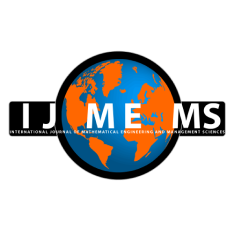Mukesh Kumar
Department of Mechanical Engineering , National Institute of Technology Kurukshetra, Kurukshetra, India.
Dixit Garg
Department of Mechanical Engineering, National Institute of Technology Kurukshetra, Kurukshetra, India.
Ashish Agarwal
Mechanical Engineering Department, Indira Gandhi National Open University (IGNOU), New Delhi, India.
DOI https://dx.doi.org/10.33889/IJMEMS.2019.4.4-069
Abstract
In the recent era, managing a supply chain efficiency is the necessity of any business due to shorter product life cycle and market penetration order uncertainty. With the increased competition globally, organizations need to be more efficient and responsive. This situation drives attention to the concept of Leagile Supply Chain (LASC). Therefore, more attention to Lean and agile inventory attributes are advocated as the foundation to sustain competitive LASC. Trade–off between the lean and agile supply chain inventory attributes and interrelationship. Upstream lean practise based on push system and downstream agile practices based on pull system. In this paper, the cause and effect analysis is to measure the influence of integrated LASC inventory attributes on the Supply Chain Performance (SCP). From the managerial viewpoint, cause and effect diagram provides the proactive understanding to positive and negative inventory attributes affects SCP.
Keywords- Lean, Agile, Leagile supply chain (LASC), Supply chain performance (SCP).
Citation
Kumar, M., Garg, D., & Agarwal, A. (2019). An Analysis of Inventory Attributes in Leagile Supply Chain: Cause and Effect Analysis. International Journal of Mathematical, Engineering and Management Sciences, 4(4), 870-881. https://dx.doi.org/10.33889/IJMEMS.2019.4.4-069.



